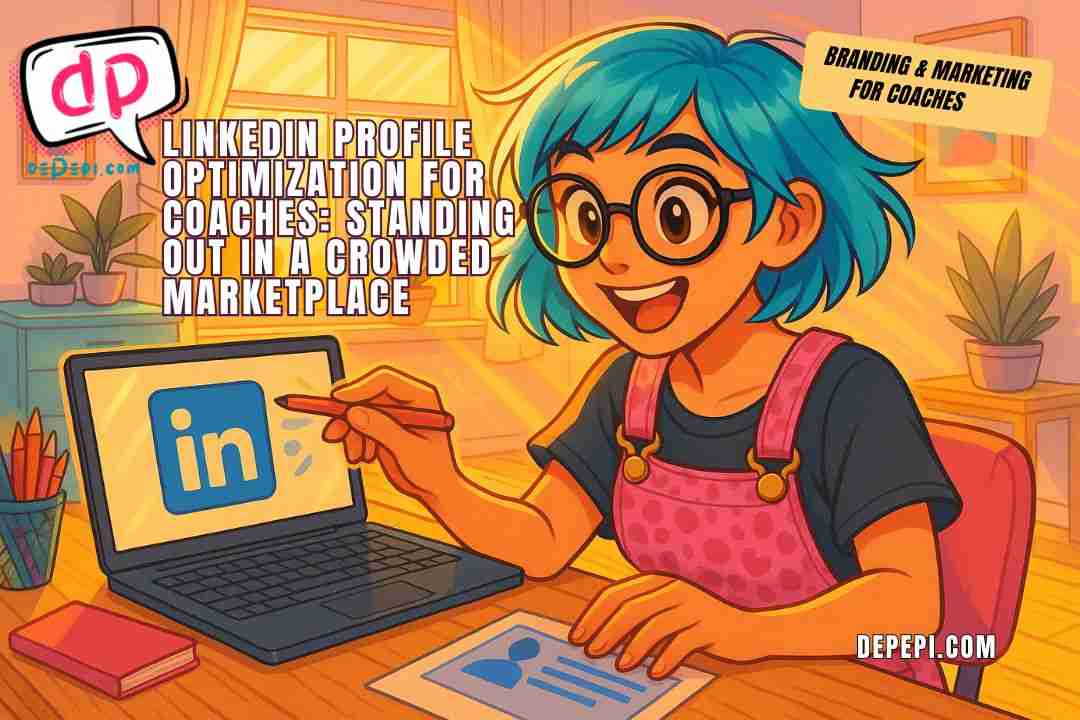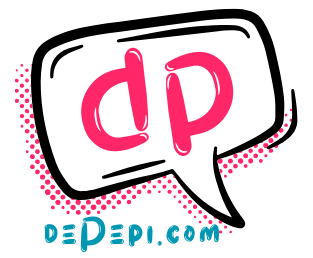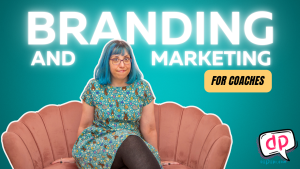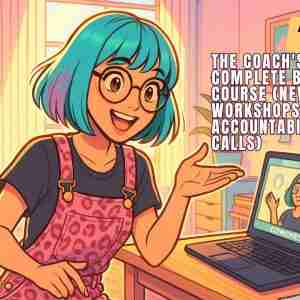LinkedIn Profile Optimization for Coaches: How to Stand Out

If you’re fishing for clients on LinkedIn, you’ve noticed that the coaching marketplace is getting crowded. Spending time on your LinkedIn profile optimization isn’t a waste of time, but the smartest thing you can do. But, do you need to optimize only on LinkedIn? Not just there, but wherever you have a profile online.
Why?
Your profile is your digital handshake, your business card, and, often, your first coaching session all rolled into one.
And yet… most coaches treat their profile like an afterthought. They write a generic headline (“Life Coach”), upload a half-decent headshot, list some past jobs, and call it done.
The result? Potential clients scroll right past. Not because they don’t need a coach, but because nothing about the profile told them:
“This is the person who gets me, who understands my challenges, and who can help me change my life.”
Today, we’re going to fix that.
Why LinkedIn Profile Optimization Isn’t Just About Looking Good
Profile optimization is not about making yourself look like everyone else with a glossy photo and some keyword stuffing. It’s about creating a clear, authentic, and trust-building introduction to who you are and how you help.
For coaches, this matters more than for almost any other profession, because coaching is built on trust.
Your profile has one job: Help the right people find you, trust you, and take the next step toward working with you.
That means:
You need to show up in searches when someone types “career coach for women” or “confidence coach London.”
Your headline, imagery, and About section need to signal authority and empathy in seconds.
The story you tell must make your ideal client think, They’re talking about me.
Step Into Your Client’s Shoes
Before we start “optimizing,” you have to know what you’re optimizing for.
Imagine you’re your ideal client. You’re scrolling LinkedIn late at night because you’re stuck in a job you hate, or you’re feeling burned out as a new manager, or you’re trying to lose weight for the tenth time.
- What would you search for?
- What kind of photo would make you pause?
- What words would make you think, Yes, this person gets me?
This exercise shifts the focus away from “what do I want to say about myself?” to “what does my client need to hear first?”.
Your Headline: Your First, and Often Only, Hook
Your headline is prime real estate. It shows up everywhere: in searches, comments, and connection requests.
Many coaches waste it on their job title. The problem? “Life Coach” is too vague. People don’t search for “life coach.” They search for solutions.
Instead of:
“Life Coach”
Try:
“Helping New Managers Lead With Confidence (Without Burning Out)”
See the difference? One is about you. The other is about them.
Photos That Build Trust Before You Say a Word
We’re wired to make snap judgments about faces. A high-quality, approachable headshot can instantly raise your credibility.
The Banner: Your Silent Sales Tool
That large rectangle behind your profile picture? It’s not decoration. It’s your billboard, or, in other words, what I call the real estate part of your LinkedIn profile.
Instead of leaving it blank, use it to:
Showcase your tagline and website.
Feature a photo of you in action: speaking, coaching, running a workshop.
Add a subtle call-to-action, like “Book Your Free Discovery Call.”
The About Section: Where You Turn Browsers into Believers
Too many coaches treat the About section like a mini résumé. However, clients don’t hire résumés. They hire people who understand them.
Think of your About section as a conversation over coffee.
The structure I recommend:
Hook: Start with the problem your client is facing. (“You’ve read the books and taken the courses, but you still feel stuck…”)
Connection: Share your “why” for coaching. (“I know how that feels — because I’ve been there.”)
Credibility: Show results you’ve achieved for others. (“Over the past 7 years, I’ve helped 200+ leaders build confidence and achieve promotions.”)
Invitation: Give them the next step. (“If you’re ready to lead with confidence, book a free call today.”)
When written this way, your About section becomes a story that positions you as the guide to their journey, not just another service provider.
Experience: show your value
Even if you’ve changed careers, your past experience can strengthen your coaching profile.
Instead of:
“Managed a retail team of 10.”
Say:
“Coached and developed a team of 10, resulting in a 30% increase in sales and three promotions.”
Same role. Different framing. One says “manager.” The other says “coach.”
Featured Content: Your Greatest Hits
Your featured section is where visitors go if they want to see proof of your expertise.
Curate it like your highlight reel:
Your most-read blog post
A client case study (with permission)
A podcast interview
Your YouTube video on a key coaching topic
A link to your free resource
Think of it as the “try before you buy” section of your profile.
Recommendations: Let Others Sell You
Testimonials build trust faster than anything you can say about yourself.
But here’s the key: specificity sells. Instead of “She’s a great coach,” aim for:
“Before working with Jane, I doubted my leadership skills. Six months later, I led my first major project and received a promotion.”
Ask happy clients and past colleagues for endorsements that highlight the transformation, not just the transaction.
KEYWORDS
Keywords help you get found. But overdo them, and your profile starts sounding like an SEO experiment instead of a real person.
The sweet spot:
Use relevant keywords (“confidence coach,” “career transition,” “burnout recovery”) naturally into your headline, About section, and experience.
Always write for humans first.
Over-Optimization Can Backfire
Here’s where I see many coaches go wrong. They follow every optimization tip they can find, until their profile reads like it was written by a marketing team instead of a human being.
Then, what happens with that profile? Potential clients sense something’s off. The profile feels more like a sales page than a person they can trust.
Remember: authenticity beats polish, every time.
Yes, make it strategic. But let your personality (your quirks, your language, your style) shine through.
Need Help?
An optimized coaching profile isn’t about pretending to be someone you’re not.
It’s about removing the friction between your ideal client discovering you… and deciding you’re the right person to help them.
You can learn how to balance optimization to gain maximum results by joining Branding and Marketing for Coaches or getting the DP framework to win at marketing online.






